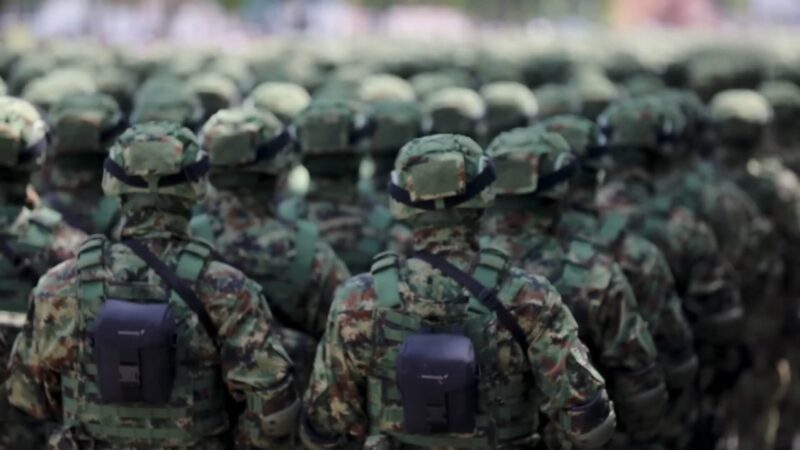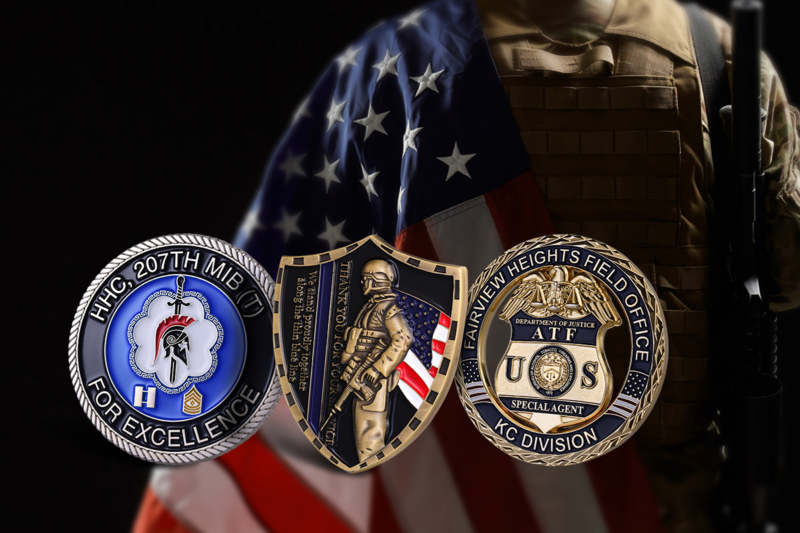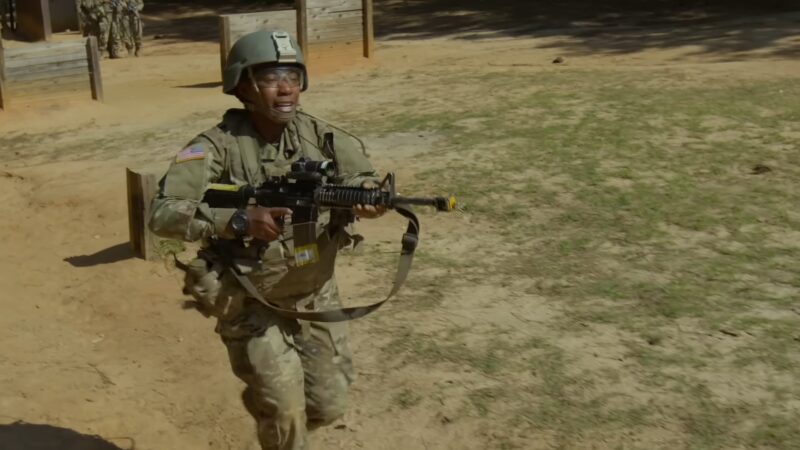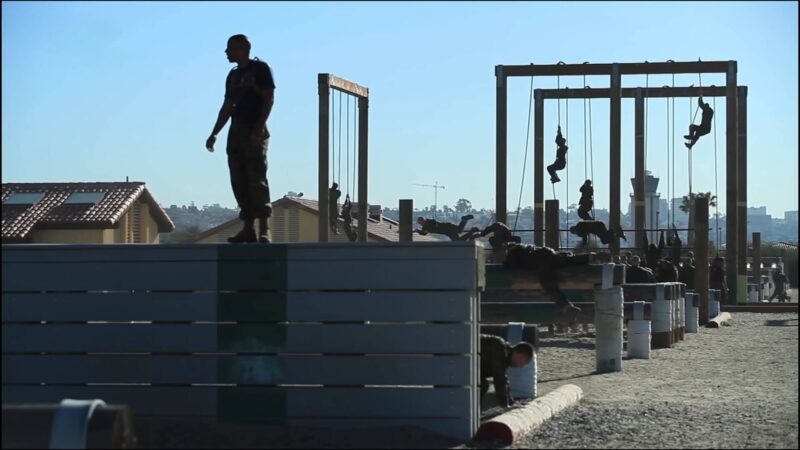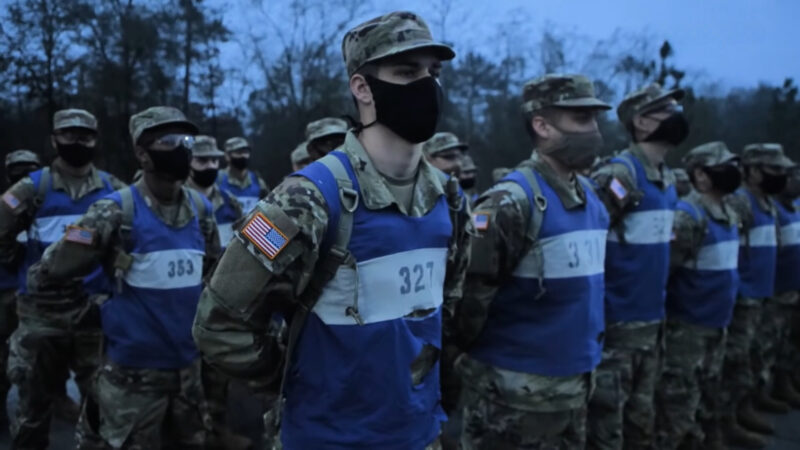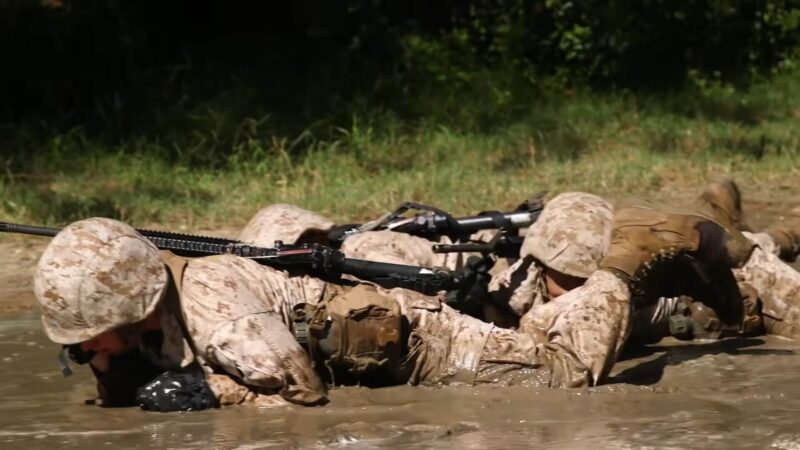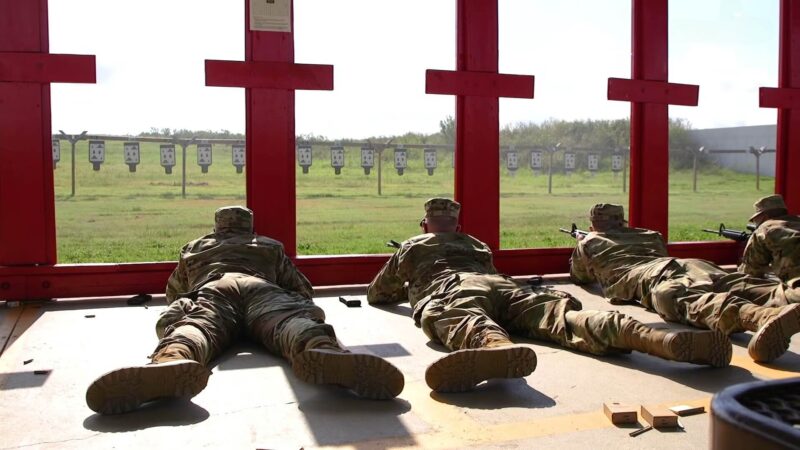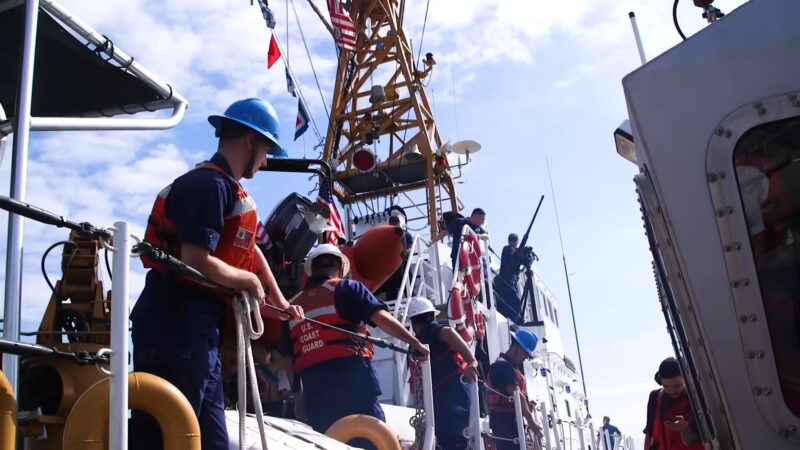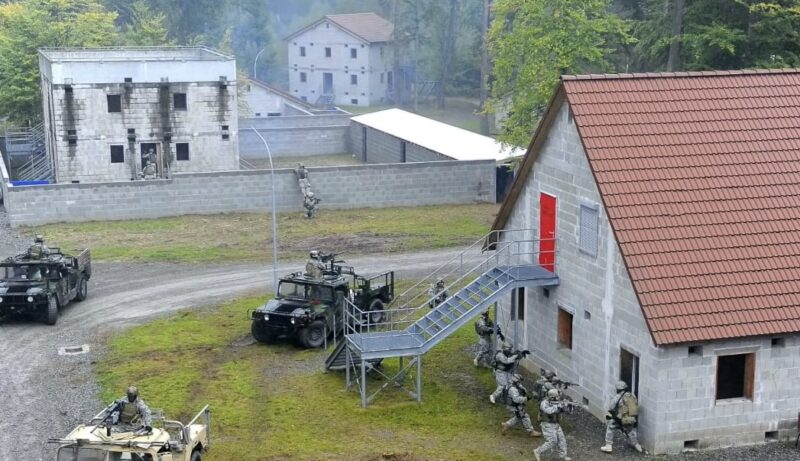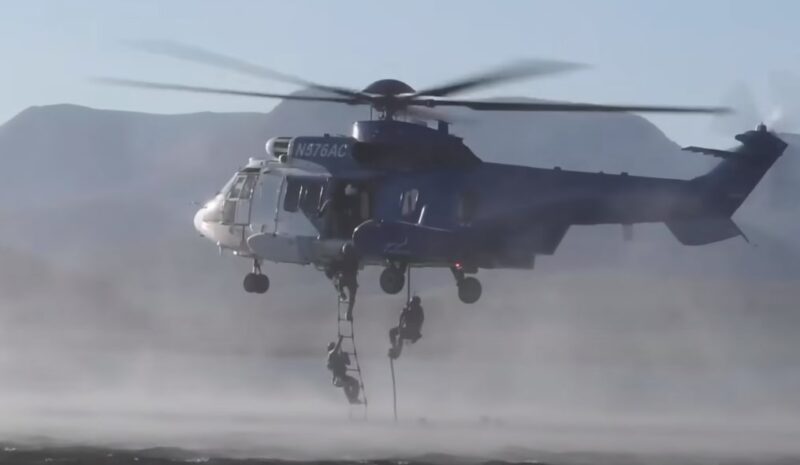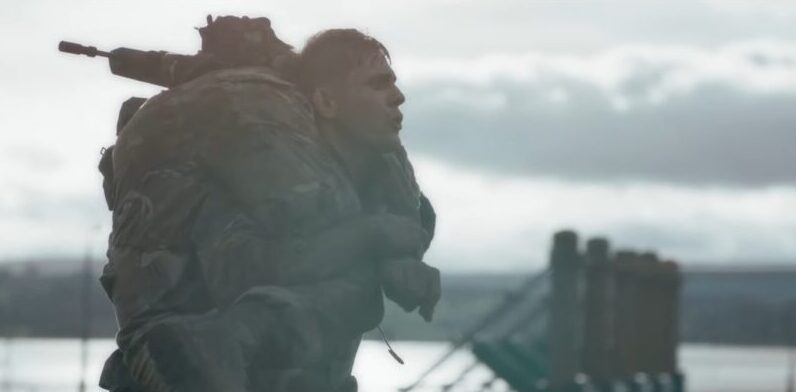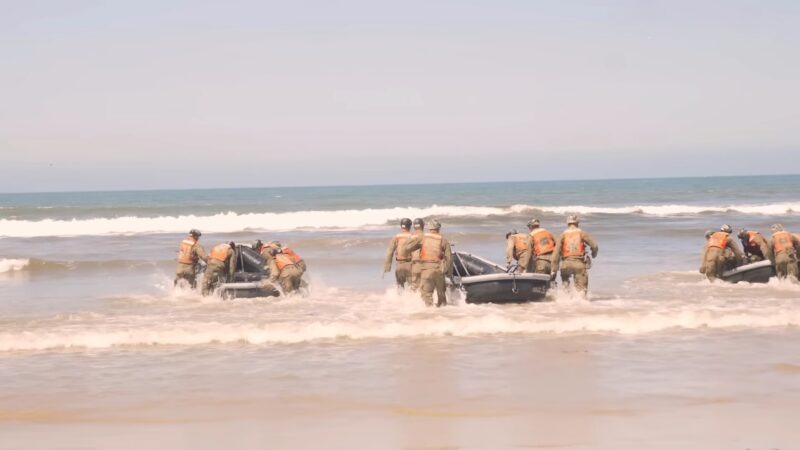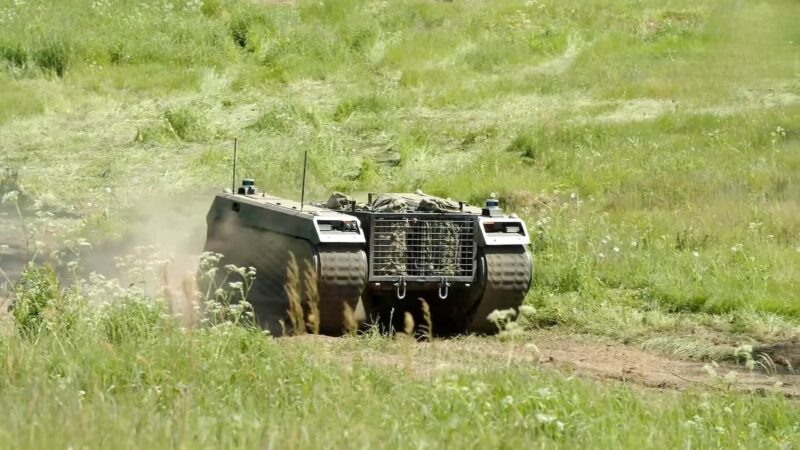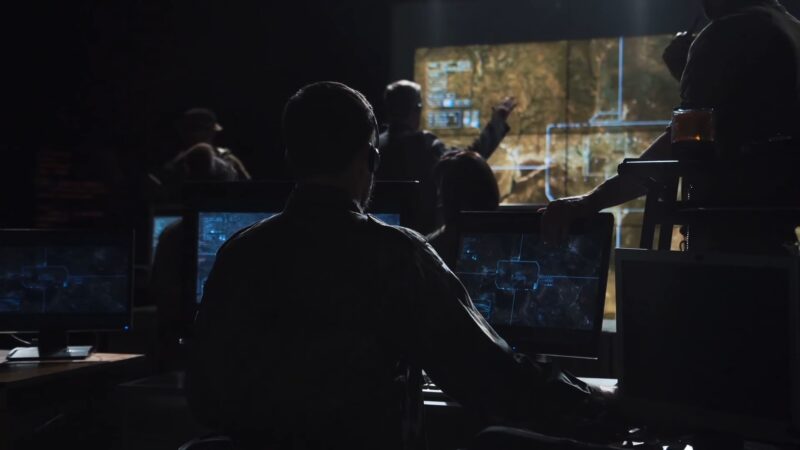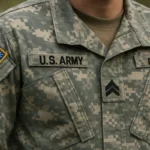When discussing which branch of the military is the hardest, it’s important to consider various aspects, including physical training, mental rigor, and the overall requirements for enlistment. Each branch offers unique challenges and defining what makes one harder than another can be highly subjective.
Regardless of the military branch, soldiers often receive Military Challenge Coins as a reward for their outstanding performance after completing challenges. Challenge coins symbolize the personal honors of the soldiers and have a long history and unique design.
Whether you currently serve in the military or plan to serve in the future, you may want to design one of your own. Check here, to see more.
For some, the relentless physical demands of the U.S. Marines signify the epitome of military toughness. Training for Marines is a grueling process designed to test the limits of recruits physically and mentally, preparing them for the rigors of combat and service.
However, difficulty can also be measured by the stringent entrance criteria and intellectual demands placed on recruits. The Air Force, for example, is often cited as the hardest military branch to get into due to its high academic standards and a strong focus on technology and aviation.
Moreover, certain specialized units within each branch, such as the Navy SEALs or the Army Rangers, undergo training that is extraordinarily challenging, both physically and psychologically.
The nature of the roles and daily duties, as well as expectations for advancement and leadership, contribute to the perceived difficulty of each branch.
Key Takeaways
- The U.S. Marines are renowned for their intense physical and mental training regimen.
- The Air Force requires high academic standards, making it challenging for enlistment.
- Specialized units within each branch undertake particularly rigorous and specialized training.
Comparative Analysis of Military Branches
In assessing the hardest branch of the military, it is crucial to consider various factors such as the specific nature of the training, operational demands, and branch-specific expectations that define the roles of each branch within the Armed Forces.
Category Breakdown
The United States Armed Forces are comprised of six branches: the Army, Navy, Marine Corps, Air Force, Coast Guard (USCG), and the newly established Space Force. Each branch serves a unique function with the Army acting as the land-based unit, the Navy responsible for naval operations, the Marine Corps specializing in expeditionary and amphibious operations, the Air Force overseeing air and space superiority, the Coast Guard managing maritime law enforcement and search and rescue, and the Space Force charged with space warfare operations.
- Army: Land Warfare
- Navy: Naval and Submarine Warfare
- Marine Corps: Amphibious and Expeditionary Warfare
- Air Force: Air and Space Superiority
- Coast Guard: Maritime Law, Environmental, and Search and Rescue Operations
- Space Force: Space Warfare and Operations
Training Intensity
The training programs for each branch are tailored to their specific operational roles, and the intensity can vary significantly. For example, the Marine Corps is known for its rigorous training regime and its School of Infantry, which is considered by many to be quite challenging.
- Marine Corps: Intensive physical and combat training at boot camp and School of Infantry.
- Navy: Demanding training with a focus on technical skills and SEALs having one of the most challenging Special Forces training.
- Army: Emphasis on physical conditioning and combat skills with challenging Ranger and Special Forces courses.
- Air Force: Focuses on technical, physical, and mental conditioning, incorporating rigorous training in various specialties particularly for Pararescue and Combat Controllers.
- Coast Guard: Extensive search and rescue, and law enforcement training with an emphasis on maritime skills.
- Space Force: Currently, Space Force training is integrated with Air Force training programs with a growing focus on space technology and operations.
Operational Demands
Operational demands are another aspect that can indicate the difficulty of service within a certain branch. The operational tempo and the type of missions faced can greatly affect service members’ experiences.
- Army: Often maintains a high operational tempo with frequent deployments, which can include intense ground combat.
- Marine Corps: Known for rapid response and adaptability in high-tension scenarios. Often the first to arrive in conflict zones.
- Navy: Sustains long durations at sea with a focus on strategic presence and power projection across the globe.
- Air Force: Manages high-tech aircraft and systems with a requirement for technical expertise and precision.
- Coast Guard: Engages in continuous patrolling for maritime law enforcement and often encounters challenging rescue operations.
- Space Force: As a newer branch, it has unique operational demands that include the management of satellite operations and the space domain that are critical to national security.
Understanding these specific elements offers clarity on the varying challenges faced by service members and helps to objectively measure the rigorous nature of each military branch.
Defining Hardship in Military Context
Hardship within the military context refers to the rigorous challenges service members encounter in various branches. These hurdles are multifaceted, encompassing physical, mental, and emotional dimensions, each contributing to the overall capability and resilience a soldier must possess.
Physical Challenges
The hardest military training involves stringent physical demands. Prospective members must often endure extensive endurance tests, strength training, and complex tactical exercises. For example, the Marine Corps is known for its arduous basic training, which includes physical fitness requirements such as timed runs, push-ups, and swimming.
Mental Trials
A soldier’s mental fortitude is tested through tasks that require sharp cognitive functions, strategic thinking, and the ability to perform under high-stress conditions. Each branch presents its own set of mental trials, with the Air Force noted for its high educational requirements that challenge recruits intellectually.
Emotional Resilience
Emotional resilience is the capacity to maintain composure and reason under the stresses of military life and combat situations. Service members often face long separations from family, the challenges of living in unfamiliar environments, and the psychological demands of combat. Achieving a high degree of emotional resilience is essential and is regarded as a subjective measure, varying greatly among individuals.
Branch-Specific Training Overviews
Each branch of the U.S. military has its distinct training program designed to prepare recruits for the physical and mental challenges inherent to military service. These programs instill discipline, foster teamwork, and develop the necessary skills required for warfighting, special operations, and support roles.
Army Boot Camp
The Army’s Basic Combat Training, often referred to as boot camp, spans 10 weeks. Here, recruits face a rigorous physical and mental regimen that lays the foundation for military life. They undergo weapons training, combat drills, and navigate obstacle courses to build endurance and combat skills.
Marine Corps Basic Training
Recognized for having arguably the most demanding basic training among the branches, Marine Corps Basic Training lasts 13 weeks. Recruits endure a grueling series of combat fitness tests and must overcome the Crucible, a 54-hour final test of endurance and teamwork.
Navy Recruit Training
Recruit Training for the Navy, commonly called boot camp, is an 8-week program held at the Great Lakes Naval Training Center. Here, sailors receive comprehensive instruction in seamanship, firearms, firefighting, and shipboard damage control, along with a focus on swimming and water survival.
Air Force Basic Military Training
The Air Force’s Basic Military Training, or BMT, spans 8 and a half weeks. The training includes the Air Force core values, physical fitness, basic warfare principles, and skills such as marksmanship, marching, and ceremonial drills.
Coast Guard Boot Camp
The Coast Guard’s boot camp at Cape May, New Jersey, is rigorous yet shorter at eight weeks. Training emphasizes the need for search and rescue, maritime law enforcement, environmental protection, and nautical skills, reflecting the Coast Guard’s multifaceted mission.
Space Force Training Program
The newest branch of the U.S. military, the Space Force, has established a tailored training program for its Guardians. Although details are evolving, it includes space-specific curricula designed to prepare service members for operations relating to space technology and defense.
Specialized Training and Operations
Each branch of the military has developed rigorous specialized training programs for their elite units. These programs are designed to prepare individuals for high-stakes, demanding operations that require exceptional skills, stamina, and tactical knowledge.
Navy SEALs Training
The Navy SEALs are a primary component of the United States special operations forces. SEALs undergo BUD/S (Basic Underwater Demolition/SEAL) training, which is divided into three phases: physical conditioning, combat diving, and land warfare training.
This extensive training ensures that SEALs can perform in any environment, carrying out missions that range from direct action to special reconnaissance.
Army Rangers and Special Forces
Army Special Forces, commonly known as Green Berets, undertake the rigorous Special Forces Qualification Course, while Army Rangers are trained at the Ranger School. Both are exhaustive programs teaching unconventional warfare, direct action, and counter-terrorism. The training also includes language, survival skills, and cultural training to enable soldiers to deploy anywhere in the world.
Marine Force Recon and Raiders
The Marine Corps operates two special operations groups: Force Reconnaissance and Marine Raiders. Both groups endure training that hones their amphibious and expeditionary warfare capabilities. Marines are also trained for both land and sea combat, making their preparation among the most challenging military training worldwide.
Air Force Pararescue and Combat Control
Air Force Pararescue (PJs) and Combat Controllers undergo some of the most physically and technically challenging training in the Air Force. Pararescue training focuses on search and rescue operations in any environment, while Combat Controllers specialize in air traffic control and terminal attack control, often embedding with other special operations units to coordinate airpower.
These specialized training programs are continuously updated to tackle evolving threats and ensure that the United States maintains its tactical advantage in a range of military operations.
Comprehensive Training Elements
Each branch of the military has distinct physical training (PT) programs designed to prepare recruits for the physical demands of service. The training schedule and physical fitness requirements vary by branch, but they all aim to instill mental toughness and ensure a high level of physical readiness.
For instance, the Marine Corps is often recognized for having rigorous PT, encompassing running, calisthenics, and obstacle courses. Recruits are tested on a Physical Fitness Test (PFT) that evaluates their endurance, strength, and speed. A sample weekly training schedule might include:
- Monday: Running, upper body strength exercises
- Tuesday: Circuit training, core strengthening
- Wednesday: Rest or light activity
- Thursday: Interval runs, lower body strength exercises
- Friday: Obstacle courses, flexibility test
- Weekend: Active recovery or rest days
Mental fortitude is another critical component, challenged through high-stress scenarios and problem-solving exercises. Training instructors create environments that test recruits’ ability to operate under pressure, enhancing their resilience.
The Air Force places a significant focus on a varied training regimen that includes weightlifting, running, and calisthenics to meet their fitness requirements. Flexibility is also a key factor, with a routine that includes:
- Stretching exercises
- Yoga or pilates
- Agility drills
Every program emphasizes the transformation of civilians into combat-ready service members, with the goal of achieving peak physical condition and emotional resilience. This holistic approach ensures personnel are capable of executing their duties efficiently, regardless of the challenge.
Enlistment and Advancement
When considering the hardest branch of the military, the facets of enlistment and advancement play a crucial role. These aspects encompass the evaluation of basic eligibility and the rigorous journey through stages of skill acquisition and career progress.
Basic Requirements and Exclusivity
The U.S. Marines are often recognized for having demanding educational requirements and a high level of exclusivity. To enlist, one needs a high school diploma or equivalent, and must meet stringent physical and mental criteria. This branch’s exclusivity is also reflected in its small size compared to other services, making it more competitive to join.
Progression and Skill Development
Once enlisted, military personnel undergo initial training programs that vary considerably in length and intensity. The Navy, for example, has a highly competitive enlistment process for their SEALs program, known for its physical rigors and complex skill development.
Service members focus on acquiring hands-on skills that are critical for advancement and effective performance within the military’s unique operational environment. Career progression often depends on continuous training, successful mission completion, and leadership abilities.
Lifestyle and Daily Duties
When considering the lifestyle and daily duties across various branches of the military, it is essential to recognize that individual experiences may vary based on one’s specialty and deployment status. However, certain generalizations about the lifestyle can be drawn.
In branches like the Marine Corps, often cited for their intense physical demands, the day may start with physical training (PT). This branch is known for rigorous PT to maintain peak physical condition. By contrast, the Air Force, which is frequently noted for its high education requirements, places a significant emphasis on technical skills and may have a daily schedule that includes specialized training or operational duties related to the maintenance and operation of aircraft.
Daily routines in the military are structured and disciplined. Service members may expect the following:
- Reveille: The wake-up call often occurs at dawn.
- Physical Training: Fitness exercises can vary from running to calisthenics.
- Duty Assignments: Tasks depend on the service member’s job, ranging from administrative duties to hands-on technical work.
- Meals: Service members often have meals at designated times in mess halls.
- Training: Skills development and drills are a regular part of military life.
- Maintenance: Upkeep and cleaning of equipment is essential, especially in the Navy and Coast Guard.
Joining the military requires a commitment to adapt to these structured environments, where following orders and maintaining discipline become part of one’s daily life. The lifestyle involves a readiness to serve wherever and whenever called upon, which may include deployments far from home for extended periods. For those who choose this path, it offers a unique blend of challenge, camaraderie, and a clear sense of purpose.
Roles Beyond Combat
While combat roles in the military are often highlighted, it is important to understand the crucial non-combat functions that are vital to military success. They often require specialized training and skills, and play a pivotal role in supporting military objectives.
Intelligence and Strategy
Intelligence specialists gather and analyze information to aid in decision-making. They utilize a blend of CPR training and technological expertise to interpret data, ensuring operational success. The synthesis of intelligence is critical, influencing both real-time tactics and long-term strategy.
Search and Rescue Operations
Military branches conduct extensive search and rescue missions, ranging from combat to humanitarian aid. Personnel trained in first aid and CPR are essential, as they can provide immediate medical support during rescue operations. Search and rescue teams are trained rigorously to carry out missions under stressful and often hazardous conditions.
Military Healthcare Specialists
Healthcare specialists in the military are proficient in more than just first aid; they deliver comprehensive medical care in diverse environments. Military healthcare specialists are highly trained, and capable of performing under the pressures of both peacetime and wartime conditions, ensuring the well-being of service members.
Equality and Inclusion in Military Branches
All branches of the military are actively working toward improved diversity, equity, and inclusion. This includes addressing gender dynamics and cultivating inclusive environments, with policies and programs aimed at countering historical male dominance and creating more female-friendly workplaces.
Addressing Gender Dynamics
Military branches recognize the importance of gender equality as a cornerstone of operational effectiveness. Initiatives have been introduced to increase the representation of women in the ranks and in leadership roles. For instance, gender-specific recruitment goals and mentorship programs aim to balance the demographics and empower female service members.
Cultivating Inclusive Environments
To foster equality, military services are implementing training geared toward cultural competency and inclusiveness. These programs are designed to build an environment where all service members feel valued and supported regardless of gender, race, or background. Examples include the inclusion of diversity training in basic training curricula, as highlighted by Military OneSource.
Historical Context and Evolution
The military branches of the United States have dynamically evolved from the Cold War era, profoundly shaping their capabilities and the definition of ‘hardest’ branch materially and strategically.
From Cold War to Modern Day
The legacy of the Cold War period is critical in understanding today’s military structure and the varying difficulties each branch faces. During this time, the emphasis on nuclear deterrence and global reach significantly impacted the development of tactical strategies and assets.
The Navy, with its aircraft carriers, transformed into a crucial projection of military power. These carriers not only demonstrated formidable power but also the complexity and difficulty of naval operations, requiring a high level of skill among sailors and aviators.
Advancements in Military Technology and Capability
The advancement in military technology has also reshaped the demands of each service branch. Innovations such as stealth technology, precision-guided munitions, and advanced communication systems have advanced each branch’s capability to operate across land, sea, and air.
As technology continues to progress, the military routinely incorporates new systems, making continuous learning and adaptation a challenging aspect for service members. Each branch strives to maintain overmatch against potential adversaries, pushing the envelope in areas such as cyber warfare and space operations.
National and Global Impact
Determining the most formidable branch of the American armed forces is not only a matter of curiosity but also a reflection of the United States’ commitment to national security and international stability. This section examines the pivotal roles each branch plays on both national and global stages.
Military Presence and National Security
The United States maintains a robust military presence across the globe, with each branch contributing uniquely to national security. The U.S. Army, for instance, deploys ground forces to various hotspots, ensuring swift response to threats that could undermine national interests.
In strategic locations like Japan, the presence of U.S. military bases acts as a deterrent to regional conflicts, protects alliances, and showcases America’s military reach and readiness to its adversaries.
International Roles and Alliances
The American armed forces’ international role extends beyond mere show of strength; it embodies the U.S. commitment to maintaining global peace. Through alliances such as NATO, the U.S. military, including branches like the Navy, projects power and provides a shield not only for the United States but also for allied nations.
These alliances are founded on mutual interests, collective defense, and shared values, underscoring the importance of the U.S. military in the global geopolitical landscape.
Benefits and Opportunities
Each military branch offers unique benefits and career opportunities for its members. They provide valuable experience, a chance to serve the nation, and substantial perks – both during and after service.
- Educational Benefits: Servicemembers can take advantage of the GI Bill, which offers educational assistance for college, graduate school, and training programs.
- Healthcare and Housing: Active-duty members receive comprehensive medical and dental care at no cost. Additionally, housing allowances or provided quarters on base are common benefits.
- Career Skills: The military is a place where individuals can acquire highly transferable skills in fields such as engineering, healthcare, aviation, logistics, and technology.
- Retirement Plans: The military offers retirement plans that members contribute to throughout their service, which can provide a stable income post-retirement.
- Family Support: Various programs are available to support the families of servicemembers, including assistance with childcare and spousal job opportunities.
The Army, for example, is known for its wide array of career fields and opportunities in combat roles as well as support areas. The Air Force, with its high educational requirements, is often highlighted for its investment in technological and research roles.
For individuals seeking to pursue a military career, these various benefits and opportunities are important factors to consider when choosing which branch to join. Each branch has its own set of attractions and challenges, and prospective servicemembers should weigh these carefully to align with their personal and professional goals.
Frequently Asked Questions
The rigor of military training varies by branch and role, with some known for their exceptionally challenging programs. Each branch’s boot camp offers a unique set of difficulties that cater to its specific operational focus. Risks also differ among branches, reflecting the inherent dangers of their missions. Here’s a closer look at some common inquiries regarding the toughest military training programs.
Which military branch’s training is considered the most rigorous?
The Marine Corps is frequently cited for having the most rigorous basic training. This foundational process prepares Marines for a variety of demanding roles within the military.
What are the top 10 toughest military training programs globally?
It’s difficult to precisely rank the toughest military training programs globally as they each have unique challenges. Programs often cited for their difficulty include Navy SEALs training, British SAS selection, Russian Spetsnaz training, and Israeli Defense Forces training.
Which branch is known to be the most elite in the military?
Within the United States, the Navy SEALs are often regarded as the most elite force due to the stringent selection process and intense training requirements that members must complete.
How do the boot camps of various military branches compare in difficulty?
While all military boot camps are demanding, the Marine Corps boot camp holds a reputation for being the harshest among the U.S. military branches, focusing heavily on physical conditioning and mental resilience.
In terms of danger, which military branch faces the highest risks?
The branches that are typically involved in direct combat roles, like the Army and Marine Corps, generally face the highest risks, given the nature of their missions.
From a female perspective, which military branch presents the greatest challenges?
Challenges for females in the military can vary based on personal strengths and the specific demands of each branch. However, the physical demands and historically male-dominated culture of the Marine Corps may present added challenges for some women.
Summary
Determining the hardest branch of the military is a complex and subjective matter, as each branch presents unique challenges and demands that cater to its specific roles within national defense and global operations.
The Marine Corps is often highlighted for its physically and mentally demanding training regimen, while the Air Force is recognized for its high academic standards and technical expertise requirements.
Specialized units like the Navy SEALs, Army Rangers, and Air Force Pararescue are renowned for their extraordinarily rigorous training programs. Beyond physical and mental toughness, the concept of difficulty can also encompass the challenges of meeting high enlistment standards, advancing within the ranks, and adapting to the lifestyle and daily duties that military service entails.

